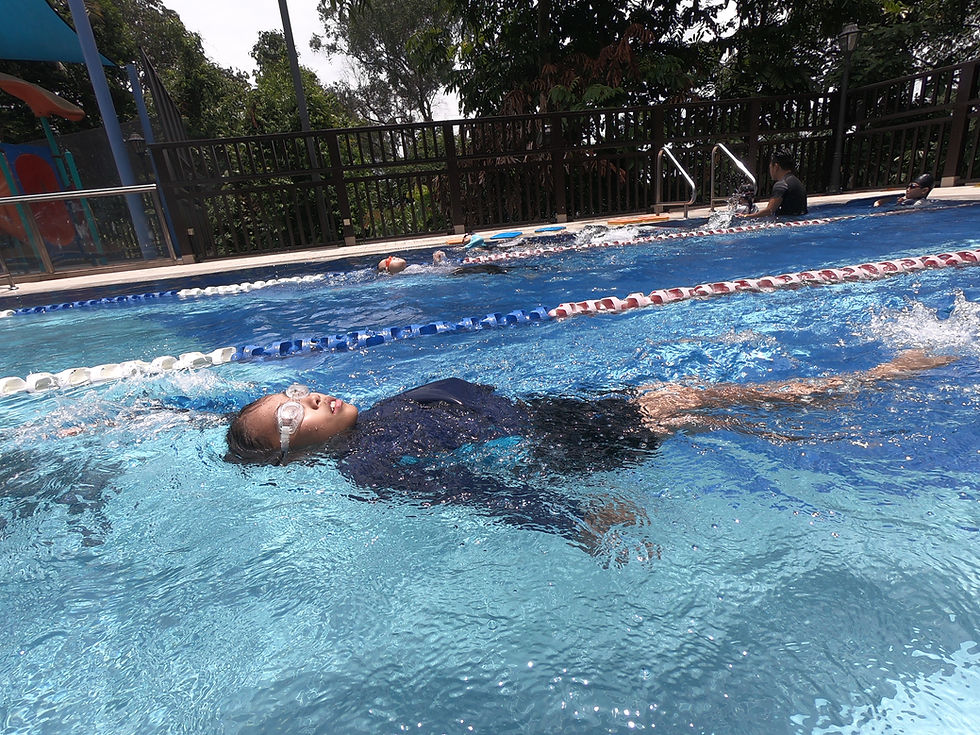Adapting Your Backstroke Skills to Diverse Swimming Conditions
- SG Sink Or Swim

- Aug 15
- 2 min read

Backstroke is often considered one of the most graceful and rhythm-driven swimming strokes — but it’s also highly influenced by the environment you’re swimming in. Pool swimming offers controlled conditions, while open water and competitive race scenarios can challenge even experienced swimmers. Learning how to adapt your backstroke technique for diverse swimming conditions is essential for improving performance, maintaining efficiency, and ensuring safety.
1. Understanding How Conditions Affect Backstroke
Different swimming environments can impact:
Water turbulence (caused by other swimmers or natural currents)
Lighting and visibility (important for spotting backstroke flags or landmarks)
Temperature changes (affecting muscle performance and breathing patterns)
Pool vs. open water layout (lane ropes vs. free boundaries)
By recognizing these variables, you can prepare both mentally and physically for adjustments.
2. Backstroke Adaptations for Pool Swimming
Pool swimming provides a controlled space with consistent lane lines and distance markers. To maximize performance:
Refine wall approaches: Use stroke counting to hit the perfect turn point every time.
Leverage lane ropes: They help stabilize water turbulence from competitors.
Focus on tempo consistency: Ideal for sprint and endurance training without external disruptions.
3. Adapting Backstroke for Open Water
Open water backstroke requires more navigation and awareness:
Practice sighting backwards: Use nearby landmarks and occasional breaststroke turns to reorient yourself.
Increase core engagement: This helps stabilize your body when currents or waves disrupt your streamline.
Train in varied conditions: Practice in calm and slightly choppy water to build adaptability.
4. Racing Scenarios and Competitive Adjustments
When swimming in competitive environments:
Prepare for lane turbulence: Strengthen your kick to stay balanced when neighboring lanes create waves.
Adjust stroke rate for speed: Slightly higher tempo can help maintain momentum when waters are unsettled.
Perfect your backstroke start: Strong push-offs and streamlined underwater kicks can give you an edge early.
5. Drills to Improve Backstroke Versatility
Incorporate these into training:
Stroke counting drills: For better wall timing.
Kickboard reverse kick sets: Strengthen your backstroke kick in isolation.
Resistance band backstroke pulls: Build pulling power for rough water conditions.
Tempo trainer workouts: Adapt to different pacing demands.
Conclusion
The best backstroke swimmers aren’t just strong — they’re adaptable. By learning to modify your technique and mindset for various swimming conditions, you’ll not only improve performance but also gain confidence in any environment. Whether you’re racing in a pristine pool or gliding under the open sky, adaptability is your secret weapon.





Comments